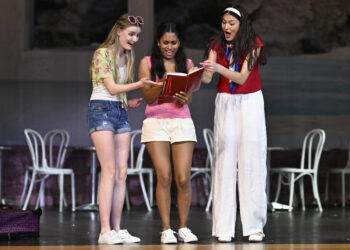The liberals' license: How the left finds release in an age of rage
"We should replace our piece of crap Constitution." Those words from author Elie Mystal, a regular commentator on MSNBC, are hardly surprising from someone who previously called the Constitution “trash” and urged not just the abolition of the U.S. Senate but also of "all voter registration laws." But Mystal's radical rhetoric is becoming mainstream on...
Read morePolice: Multiple people struck by car on U Street, 7 hospitalized
WASHINGTON (DC News Now) -- The Metropolitan Police Department (MPD) said one person is in custody following a collision on...
Get up and sing along to ‘Mamma Mia!’ at Century High School
Century High School students will hold a series of high-energy performances of the ABBA-inspired jukebox musical “Mamma Mia!” this weekend...
Their physical therapy coverage ran out before they could walk again – Orange County Register
Recoveries are routinely stymied by a widespread constraint in health insurance policies: rigid caps on therapy sessions. Subscribe to continue...
The Better Way to Fix Foreign Aid
“Time for it to die.” That verdict on USAID, by Department of Government Efficiency head Elon Musk, set off shockwaves...


























 Al Jazeera English | Live
Al Jazeera English | Live






















